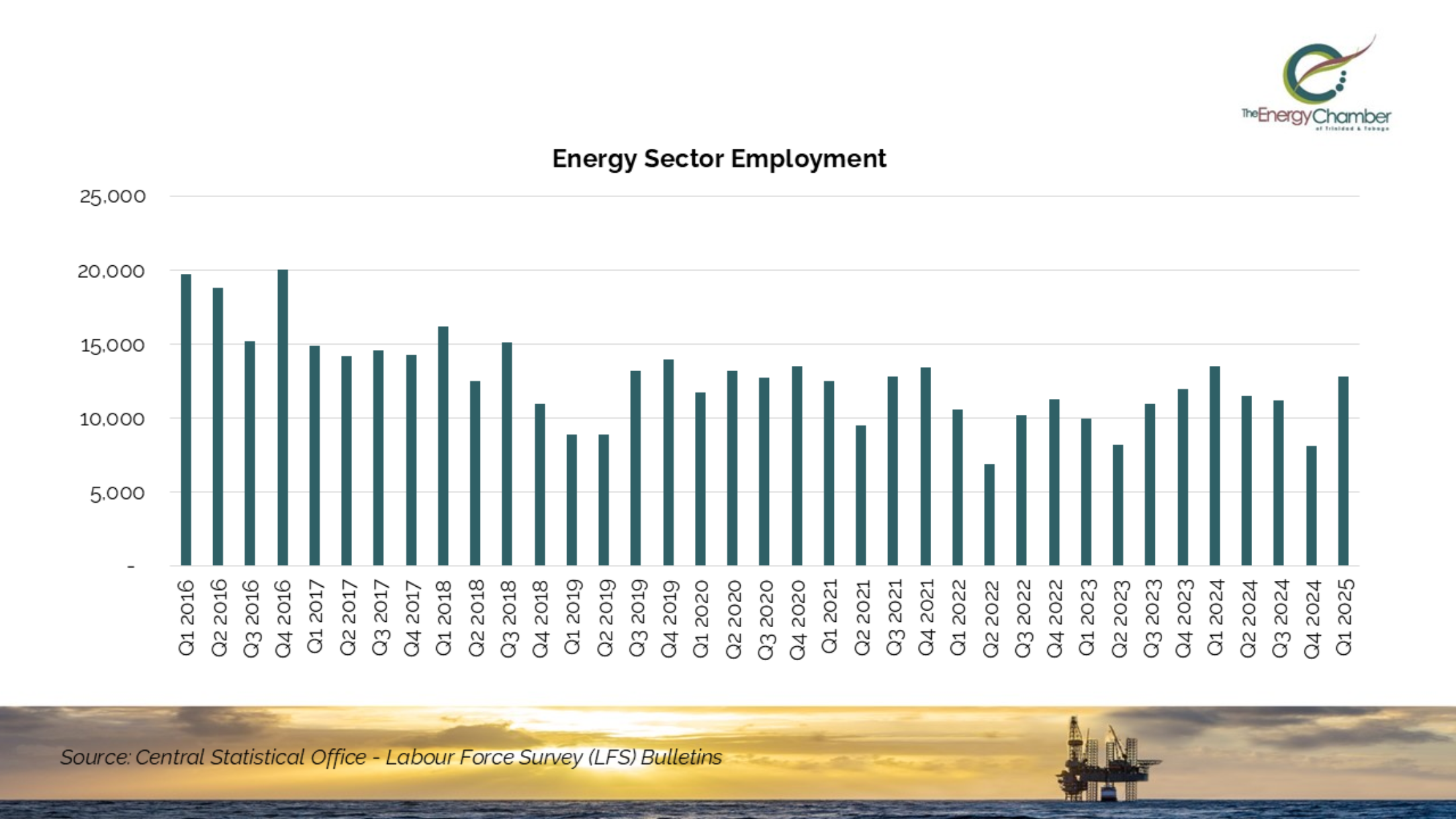The energy sector is the major contributor to national income, contributing on average 30-40% of gross domestic product (GDP). However, it only employs on average 2% of the national workforce or around 12,700 people.
Over the past decade energy sector employment has fallen significantly, however that decline is complicated by the fact that employment in the sector also varies significantly from quarter to quarter. The coefficient of variance (a statistical measure of variability) is around 24% for the energy sector, significantly higher than all other sectors where it measured about 3.5%.
The Central Statistical Office (CSO) publishes quarterly Labour Force Survey (LFS) Bulletins, broken down by industry group. The CSO industry group for energy covers employment in petroleum and gas, including production, refining and service contractors.
According to the latest from the CSO, in Q1 2025, the average number of people with jobs for all sectors was 558,900. This represented a 2.3% decrease from the 4th Quarter of 2024. By contrast the number of people with jobs in the energy sector grew from 8,100 people in Q4 2024 to 12,800 in Q1 2025, a massive 58% increase. Before this is celebrated, however, it needs to be understood in the context of the very high variability between quarters in the sector. Jobs in the sector dropped by 27% between Q3 and Q4 2024.
This is why it is important to look at longer-term trends and not just quarter to quarter variability.
The variability between quarters in energy sector employment is because a lot of jobs in the sector are project based. A significant percent of the jobs in the sector are temporary project-based jobs, for major maintenance projects or “turnarounds” (TARs) in Point Lisas, Atlantic or other downstream plants. Offshore, the number of jobs might also vary significantly if there are major drilling programmes, installations or maintenance programmes.
A turnaround is a planned, comprehensive maintenance event where a processing unit or entire facility is taken offline for an extended period to undergo essential repairs, inspections, and upgrades. These turnarounds are usually scheduled events that happen in the sector and require substantial planning and significant resources to execute – both financial and human. During turnarounds, there are thousands of people who are hired, mainly through contractors, to execute the work.
These workers are often itinerant workers who move between different contractors to execute different projects. They often work for short periods at different locations. After the project is complete, they are often employed in other sectors, for example in construction or manufacturing. This is why the overall employment numbers do not drop substantially from quarter to quarter.
While the pattern of employment in the energy sector does vary significantly from one quarter to the next, there has been an overall decline in employment in the sector in the past decade. The closure of the refinery in 2018 resulted in a significant dip in employment in the sector in 2019 but since then average annual numbers employed have stabilized.
Any significant increase in jobs in the sector would only come from significant increases in activity levels. Construction projects in the industry were a major source of jobs in the 1990s and 2000s as new plants were built in Point Lisas and Atlantic. It is unlikely that there will be any new plant construction work in the foreseeable future, given the gas supply outlook. Reopening the refinery could create both permanent jobs and contractor jobs during the activities to refurbish and restart the facility and many in the industry are awaiting further details.
In the upstream sector, onshore drilling activity is one area where significant new jobs could be created, especially in south Trinidad. Onshore oil projects typically create both direct jobs and many indirect jobs for subsectors like road transport and bridge and road construction. Generally, oil production generates more jobs than gas production, as more activity is required to maintain production.


